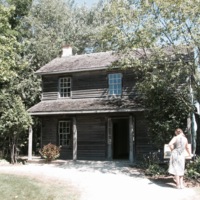
Uncle Tom’s Cabin Historic Site
Built on the site of the Black settlement that Rev. Josiah Henson helped found in 1841, Uncle Tom’s Cabin Historic Site preserves the settlement where Henson and his wife Nancy lived. The site is situated within 200 acres and was named after Harriet Beecher Stowe’s popular 1852 antislavery novel which featured an enslaved African man named Tom (based on Josiah Henson) as its protagonist. The area of land was purchased in 1841 to establish the Dawn Settlement - a refuge for the many fugitives from slavery who escaped to Canada from the USA. Today thousands of visitors travel to the site every year to learn and understand more about this history. The site includes a number of buildings which originally composed the British-American Institute, an all-ages teacher training and general education manual school. Present day visitors will find examples of a sawmill, smokehouse, and pioneer church, as well as the Henson family cemetery. The house where Josiah Henson and his wife Nancy lived has also been restored to 1850s period fashion. Also located on the site is the Josiah Henson Interpretive Centre which houses a collection of 19th century artefacts relating to the abolitionist era and to Henson himself. Highlights include a rare early edition of Henson’s autobiography and a signed portrait of Queen Victoria presented to him in 1877. Upon arrival at the Interpretive Centre, visitors are guided into the North Star Theatre where they are shown a film titled Father Henson: His Spirit Lives On. A further gallery named Underground Railroad Freedom Gallery displays a narrative of the history of African freedom seekers from initial capture in Africa and enslavement in the United States to freedom in Canada. The site also runs a variety of educational programmes aimed at children and young adults, alongside a popular programme of guided tours.